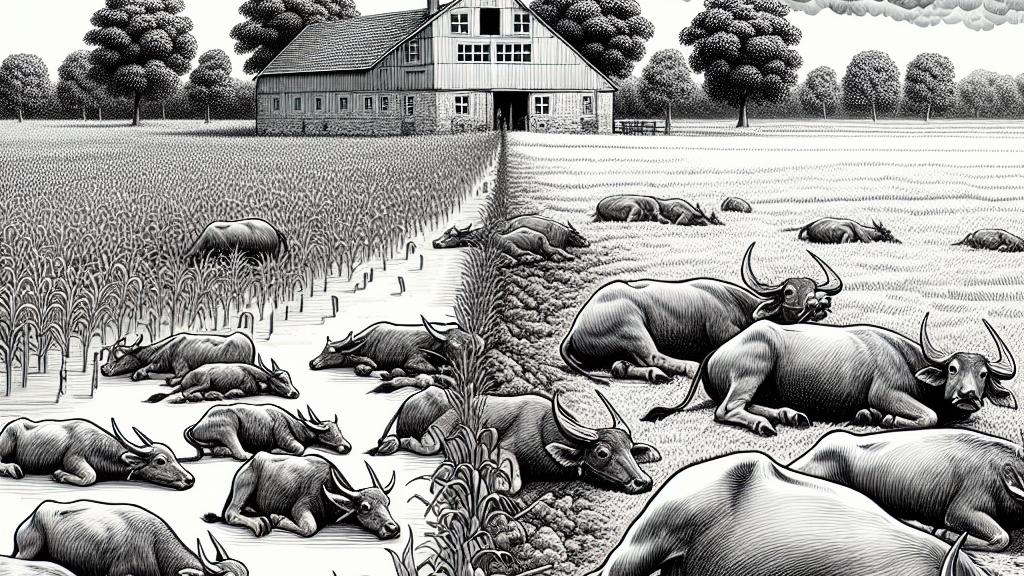Germany Faces Foot-and-Mouth Disease Outbreak in Water Buffalo
Overview
- Germany grapples with its first foot-and-mouth disease outbreak since 1988, raising alarms in farming communities.
- The infection struck a farm near Berlin, impacting vital water buffalo herds relied upon for agriculture.
- Immediate government actions, including culling and transport bans, are crucial to prevent the disease's spread.

A Shocking Emergence of Foot-and-Mouth Disease
Germany's agricultural landscape is facing a grave challenge as an outbreak of foot-and-mouth disease has emerged unexpectedly near Berlin. This unexpected twist marks the country's first encounter with the disease in over thirty years. Picture this: a group of fourteen water buffalo, essential to local farming, has been afflicted, with three already lost. While foot-and-mouth disease doesn't threaten human health, the rapid decline of livestock due to blisters and fevers poses a dire situation for farmers who depend on these animals for their livelihoods.
The Broader Impact on Agriculture and Livestock Welfare
The fallout from this outbreak resonates far beyond the farm itself, sending ripples through the entire agricultural sector. Water buffalo serve multiple purposes: they provide nutritious milk and meat, and they even help manage overgrown grasses. However, the sight of these majestic beasts suffering from the disease is heart-wrenching. Farmers are confronted with the harsh decision to cull the remaining buffalo in a desperate bid to halt the virus's advance. This situation underscores the emotional and economic toll such outbreaks can wreak on communities that depend on livestock for sustenance and income.
Swift Government Action to Tackle the Crisis
Recognizing the severity of the outbreak, the German government has swiftly enacted a series of measures aimed at containment. Federal Agriculture Minister Cem Ozdemir wasted no time in organizing a crisis committee to address this urgent public health concern. As a result of this rapid response, exclusion zones have been established - three kilometers around the infected farm and ten kilometers of heightened surveillance. What's more, a strict 72-hour transport ban on cloven-hoofed animals has been implemented, showcasing the commitment of authorities to protect other farms. In a community already reeling from uncertainty, these decisive moves offer a glimmer of hope in restoring stability.
Learning from History: Ensuring Future Preparedness
When considering the history of foot-and-mouth disease, we can draw many crucial lessons that guide contemporary responses. Notably, previous outbreaks in the UK during 2007 saw the painful culling of over 2,000 animals to control the spread of the disease. Similarly, Bulgaria faced severe consequences after an outbreak in 2011. These historical episodes serve as stark reminders of the necessity for vigilance and preparedness. By implementing rigorous biosecurity measures and fostering a spirit of community readiness, Germany aims to ensure that its farming industry remains resilient in the face of future challenges. Ultimately, embracing these lessons can help safeguard both livestock and livelihoods for generations to come.

Loading...